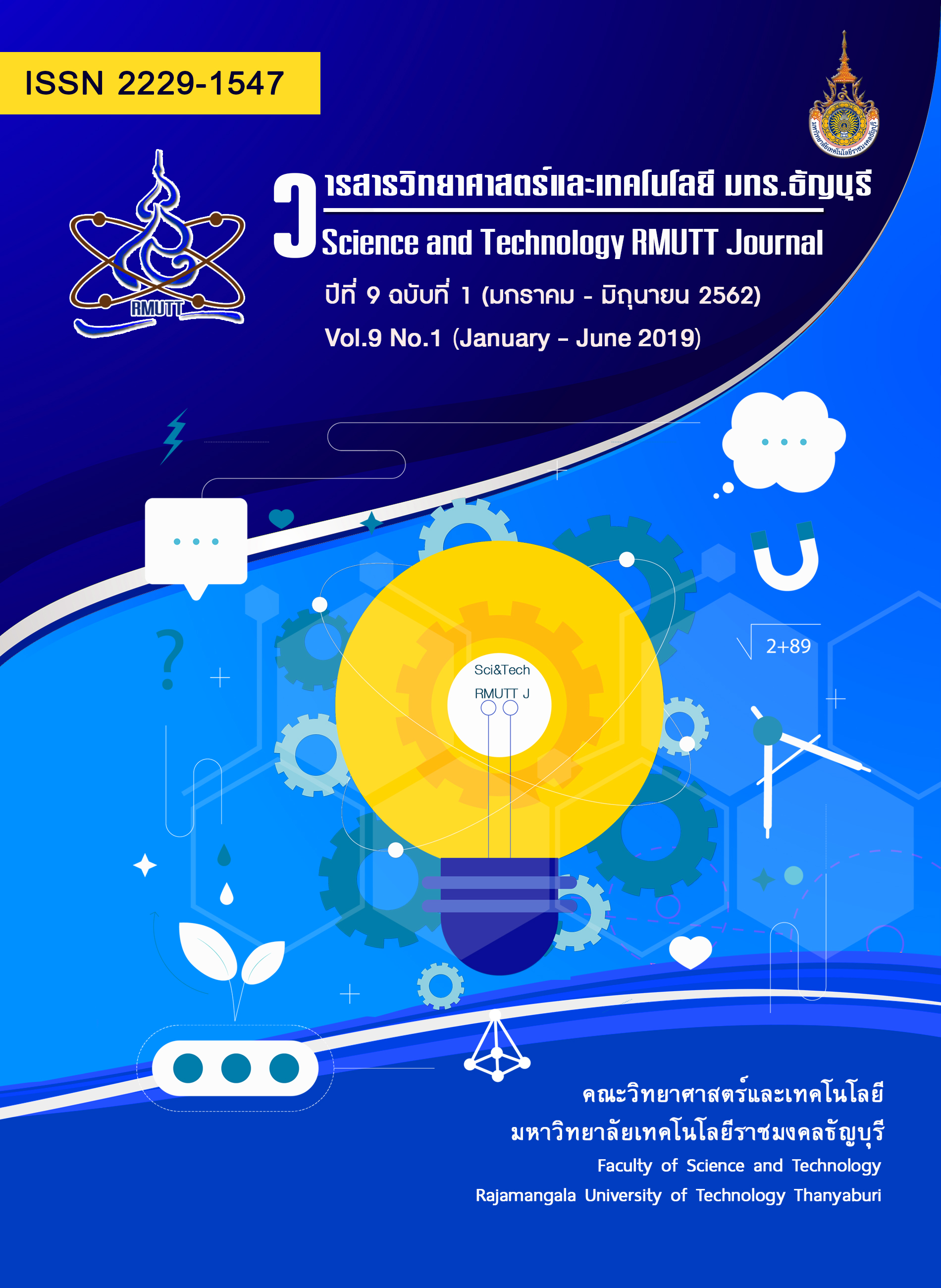Designing STEM activities on making battery from household chemical substances for grade 12 students
Main Article Content
Abstract
This research aimed to create a STEM activity on making battery from household chemical substances and to study the engineering design process and scientific skills of grade 12 students after attending this activity. The participants were selected from the second semester students in science program of 2018 academic year. They were 41 students who joined the electrochemistry science club. The research model was One Group Posttest Design, compared to 80 percent criteria. The research tools included a lesson plan, an evaluation form for instructors to evaluate engineering design process of students and the test questions for students to evaluate their fourteen scientific skills. The results showed that students gained a very good engineering design process with 90.4%. Scientific skills of students were also high as 83.4% after attending this activity.
Article Details
References
สุพรรณี ชาญประเสริฐ. การออกแบบการจัดการเรียนรู้ตามแนวสะเต็มศึกษากับการพัฒนาทักษะศตวรรษที่ 21. สถาบันส่งเสริมการสอนวิทยาศาสตร์และเทคโนโลยี. 2558. 43(192): 14-17.
สนธิ พลชัยยา. สะเต็มกับทักษะการคิดขั้นสูง. สถาบันส่งเสริมการสอนวิทยาศาสตร์และเทคโนโลยี. 2557. 42(189): 7.
อภิสิทธิ์ ธงไชย. เทคโนโลยีและวิศวกรรมคืออะไร ในสะเต็มศึกษา. สถาบันส่งเสริมการสอนวิทยาศาสตร์และเทคโนโลยี. 2556. 42(185): 35-37.
สถาบันส่งเสริมการสอนวิทยาศาสตร์และ เทคโนโลยี. คู่มือการใช้หลักสูตรวิทยาศาสตร์กายภาพ ธรรมชาติของสารและการเปลี่ยนแปลงของสาร ชั้นมัธยมศึกษาปีที่ 4-6. สถาบันส่งเสริมการสอนวิทยาศาสตร์และเทคโนโลยี. กระทรวงศึกษาธิการ. กรุงเทพฯ. 2556.
รุ่งทิพย์ ศศิธร ศักดิ์ศรี สุภาษร และชาญ อินทร์แต้ม. การเพิ่มผลสัมฤทธิ์ทางการเรียน เรื่องไฟฟ้าเคมีด้วยการเรียนรู้แบบร่วมมือร่วมกับชุดการเรียนรู้แบบ 5E. การประชุมวิชาการเสนอผลงานวิจัยระดับบัณฑิตแห่งชาติ ครั้งที่ 23. ณ มหาวิทยาลัยเทคโนโลยีราชมงคลอีสาน จังหวัดนครราชสีมา. 23-24 ธันวาคม 2554: 723-728.
มาลัย สว่างภพ ปุริม จารุจำรัส และมะลิวรรณ อมตธงไชย. การสร้างเซลล์กัลวานิกอย่างง่ายที่ทำจากเส้นด้าย. วารสารหน่วยการวิจัยวิทยาศาสตร์ เทคโนโลยี และสิ่งแวดล้อมเพื่อการเรียนรู้. 2560. 8(2): 421-428.
Skinner J. F. Electrochemical Demonstration: Motor driven by a simple galvanic cell. Journal of Chemical Education. 1977. 54(10): 619.
Goodisman J. Observations on lemon cells. Journal of Chemical Education. 2001. 78(4): 156-158.
Swartling D.J. and Morgan C. Lemon cells revisited the lemon-powered calculator. Journal of Chemical Education. 1998. 75(2): 181-182.
Muske K.R., Nigh C.W. and Weinstein R.D. A lemon cell battery for high-power applications. Journal of Chemical Education. 2007. 84(4): 635-638.
Goto H., Yoneyama H., Togashi F., Ohta R., Tsujimoto A., Kita E., and Ichi K. Preparation of conducting polymers by electrochemical methods and demonstration of a polymer battery. Journal of Chemical Education. 2008. 85(8): 1067-1070.
ชานนท์ จันทรา. การประเมินในชั้นเรียนคณิตศาสตร์ จากแนวคิดสู่การปฏิบัติ. พิมพ์ครั้งที่ 1. อาร์ แอนด์ เอ็น ปริ้นท์, กรุงเทพฯ. 2555.
Chang R. Chemistry. 10th ed. McGraw-Hill Companies, Inc., New York. 2010.
Lide D.R. CRC Handbook of Chemistry and Physics. 90th ed. CRC Press/Taylor and Francis, Boca Raton, FL. 2009-2010.
Tamez M. and Yu J.H. Aluminum-air battery. Journal of Chemical Education. 2007. 84(12): 1936A-1936B.






